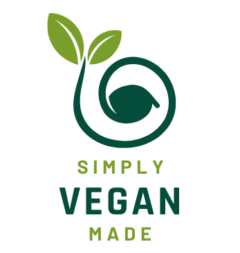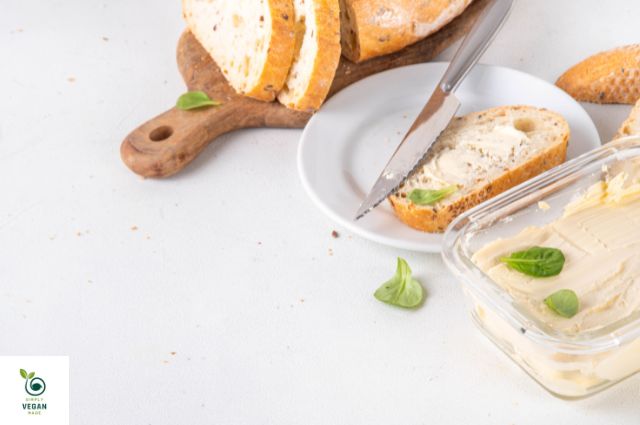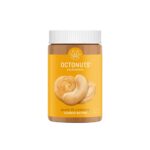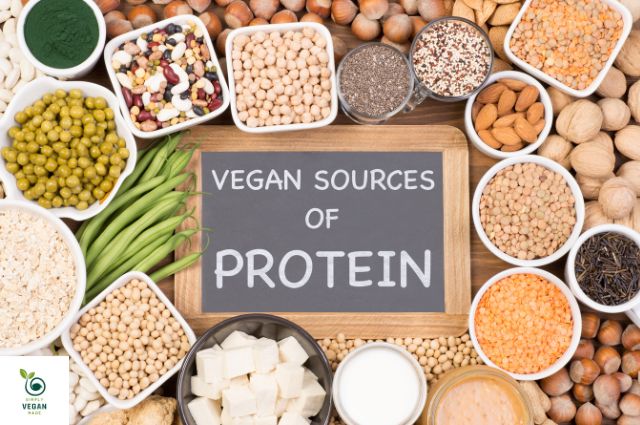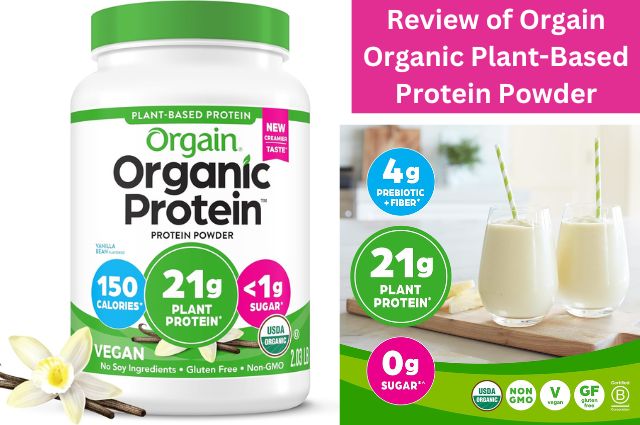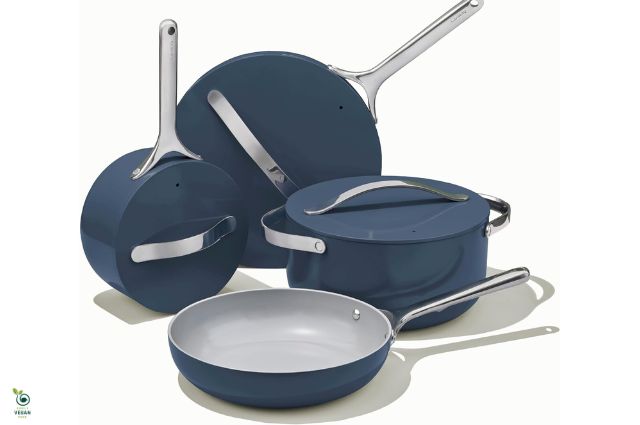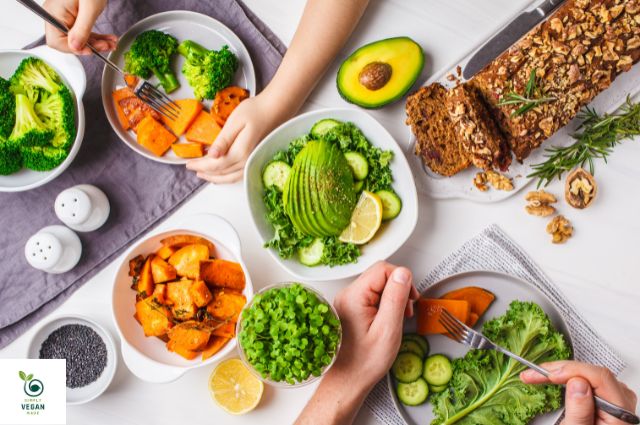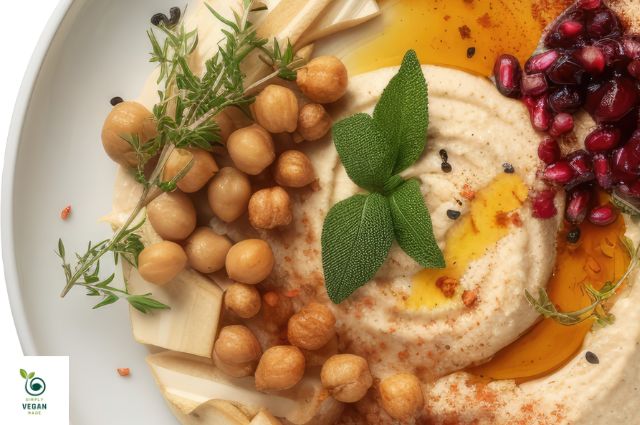As a long-time vegan, I’ve seen firsthand the remarkable transformation of plant-based vegan butter choices. When I first embraced a vegan lifestyle, our options were limited to questionable margarines and a handful of lackluster spreads.
Today, the landscape has shifted dramatically, offering a diverse array of vegan butter choices that rival their dairy counterparts in taste, functionality, and nutritional value.
Understanding the Basics of Vegan Butter
Vegan butter aims to copy the creamy texture, rich flavor, and versatile functionality of dairy butter. Most plant-based choices achieve this through a carefully crafted blend of vegetable oils, emulsifiers, and sometimes cultured ingredients to mimic the tangy notes of traditional butter.
The key comes from finding the right balance of fats that remain solid at room temperature but melt smoothly when heated.
Popular Vegan Butter Options
1. Coconut Oil-Based Spreads
Coconut oil has become a staple in the vegan butter world, and for good reason. It’s high saturated fat content gives it a similar melting point to dairy butter, making it an excellent choice for baking and cooking.
Many commercial vegan butters use coconut oil as their base, often blending it with other oils to achieve the desired consistency and flavor profile.
When shopping for coconut oil-based spreads, look for brands that use sustainably sourced coconut oil to minimize environmental impact. Some companies work directly with coconut farmers to ensure fair wages and sustainable farming practices.
Here is an example of a coconut based spread available on Amazon.
Nutiva Organic Coconut Oil with Non-Dairy Butter Flavor
2. Olive Oil Spreads
For those seeking a heart-healthy option, olive oil-based spreads offer a rich source of monounsaturated fats. While they may not perform as well in high-heat cooking situations, they excel as spreads and in savory dishes.
The distinct flavor of olive oil can add a delightful Mediterranean twist to your culinary creations.
Olive oil spreads often contain a blend of oils to achieve a more butter-like consistency. Some brands incorporate ingredients like flaxseed oil to boost the omega-3 content, making them a nutritious choice for everyday use.
Here is an example of a olive oil spread available on Amazon.
Earth Balance Olive Oil Buttery Spread, Vegan and Soy Free, Keto Friendly
3. Nut and Seed Butters
While not traditional ‘butter’ replacements, nut and seed butters serve as excellent choices in many recipes. Almond butter, cashew butter, and even sunflower seed butter can add richness and depth to baked goods, sauces, and spreads.
They also pack a nutritional punch, offering protein, fiber, and essential minerals.
Experimenting with different nut and seed butters can open up a world of flavor possibilities. For example, macadamia nut butter can lend a luxurious, buttery texture to vegan frostings, while tahini (sesame seed butter) works wonders in savory sauces and dressings.
Here is an example of a nut spread available on Amazon.
Octonuts Dry Roasted Pure Cashew 16oz Nut Butter
4. Avocado Butter
It’s creamy texture and high healthy fat content make it an excellent butter substitute in many recipes.
From spreading on toast to replacing butter in baked goods, avocado’s versatility is impressive.
Plus, it’s loaded with nutrients like potassium and vitamin K.
When using avocado as a butter replacement, keep in mind that it will impart a slight green color to your dishes. This can be a fun addition to certain recipes (think: St. Patrick’s Day treats) but may not be desirable in all applications.
If you don’t want to use avocado directly, there are avocado oil ghee products available. Here is an example of a avocado butter spread available on Amazon.
Kevala Avocado Ghee Blend – Ghee Butter – Avocado Oil
Innovative Approaches to Vegan Butter
As the demand for plant-based choices grows, so does the innovation in this space. Let’s explore some cutting-edge approaches to vegan butter production.
Cultured Vegan Butter
One of the most exciting developments in recent years is the emergence of cultured vegan butter. By fermenting plant-based ingredients with specific bacterial cultures, manufacturers can create a product that closely mimics the complex flavor profile of dairy butter.
The result is a tangy, rich spread that can fool even the most discerning palates.
The fermentation process enhances flavor but can also improve the nutritional profile of the product. Some cultured vegan butters contain useful probiotics, supporting gut health while satisfying your taste buds.
Algae-Based Options
Looking to the sea for inspiration, some companies are exploring the use of algae to create butter choices. Rich in omega-3 fatty acids, these innovative spreads offer a unique nutritional profile while maintaining a butter-like consistency.
As an added bonus, algae cultivation has a lower environmental impact compared to many land-based crops.
Algae-based butters often have a neutral flavor, making them versatile for both sweet and savory applications. Their high omega-3 content makes them particularly appealing to health-conscious consumers looking to boost their intake of these essential fatty acids.
Upcycled Ingredients
In the spirit of sustainability, some forward-thinking brands are creating vegan butter using upcycled ingredients. For example, spent grains from beer production or discarded fruit pulp from juice manufacturing can be transformed into delicious, eco-friendly spreads.
This approach reduces food waste and creates unique flavor profiles.
Upcycled vegan butters often have a distinct taste that sets them apart from traditional choices. For example, a spread made from spent coffee grounds might have subtle coffee undertones, making it perfect for pairing with chocolate in baked goods.
Mastering Vegan Butter in the Kitchen
Now that we’ve explored the various options available, let’s dive into how to use vegan butter effectively in your cooking and baking.
Baking with Vegan Butter
When it comes to baking, not all vegan butters are created equal. For the best results, look for options with a fat content similar to dairy butter (around 80%).
This confirms proper texture and structure in your baked goods.
Remember that plant-based fats can melt at different temperatures, so you may need to adjust your techniques slightly.
For flaky pastries, try chilling your vegan butter and utensils before use to maintain those all-important layers. When creaming vegan butter for cakes and cookies, you may need to beat it for a bit longer than you would dairy butter to achieve the desired light and fluffy texture.
Cooking and Sautéing
When using vegan butter for cooking, be mindful of it’s smoke point. Some plant-based options may burn at lower temperatures than dairy butter.
For high-heat cooking, consider using a blend of vegan butter and a heat-stable oil like refined coconut oil or avocado oil.
Vegan butter can add a rich flavor to sautéed vegetables and pan-fried dishes. Try using it to make a quick sauce for pasta by melting it in the pan with some garlic and herbs, then tossing with your favorite noodles and a splash of pasta water.
Creating Sauces and Spreads
Vegan butter can be a game-changer in creating rich, creamy sauces and spreads. From a classic vegan béarnaise to a decadent garlic butter spread, the possibilities are endless.
Experiment with different bases and add-ins to find your perfect combination.
For a simple yet impressive compound butter, soften your favorite vegan butter and mix in minced herbs, garlic, or even sun-dried tomatoes. Roll it into a log using parchment paper and chill.
Slice off rounds to melt over grilled vegetables or plant-based steaks for an extra flavor boost.
Nutritional Considerations
While vegan butter choices can be a healthier choice in many cases, it’s important to approach them with a balanced perspective. Here are some key nutritional factors to consider:
Saturated Fat Content
Some plant-based options, particularly those based on coconut oil, can be high in saturated fat. While plant-based saturated fats may have different health effects than animal-derived ones, moderation is still key.
If you’re concerned about saturated fat intake, opt for spreads made with a blend of oils that include unsaturated fats.
Omega-3 to Omega-6 Ratio
Pay attention to the types of fats in your chosen vegan butter. Aim for options that provide a good balance of omega-3 and omega-6 fatty acids.
Some brands incorporate flaxseed oil or algae-derived omega-3s to improve this ratio.
Added Nutrients
Some vegan butters are fortified with vitamins B12 and D, which can be useful for those following a plant-based diet. These added nutrients can help fill potential gaps in a vegan diet, but remember that a varied, whole-food diet should still be the primary source of nutrients.
Calorie Content
Remember that vegan butter, like it’s dairy counterpart, is calorie-dense. Use it mindfully as part of a balanced diet.
While it can be a healthier alternative to dairy butter, it’s still a concentrated source of fat and should be consumed in moderation.
Environmental Impact
One of the driving forces behind the popularity of vegan butter is it’s potential for a lower environmental impact compared to dairy butter. However, it’s crucial to consider the entire lifecycle of the product:
Sustainable Sourcing
Look for options that use sustainably sourced ingredients. For example, some brands use palm oil, which has been linked to deforestation.
Opt for products that use sustainably certified palm oil or avoid it altogether.
Packaging Considerations
Consider the packaging – some brands are moving towards more eco-friendly solutions. Look for options in recyclable or biodegradable packaging, or better yet, brands that offer refillable containers.
Transportation Impact
Think about the transportation impact – locally produced options may have a lower carbon footprint. If you’re buying imported vegan butter, consider the distance it has traveled and how that affects it’s overall environmental impact.
Water Usage
Plant-based butters generally require less water to produce compared to dairy butter. However, some ingredients, like almonds, can be water-intensive.
Look for brands that are transparent about their water usage and conservation efforts.
The Future of Vegan Butter
The vegan butter market continues to evolve rapidly, with new innovations emerging regularly. From 3D-printed options with customizable textures to butter choices infused with probiotics for gut health, the possibilities seem endless.
We may soon see climate-adaptive vegan butters using drought-resistant crops or options tailored for specific dietary needs.
As consumer demand for sustainable and health-conscious products grows, we can expect to see even more advancements in the vegan butter space. This might include:
- Personalized vegan butters with custom nutrient profiles
- Butter choices made from novel plant sources like ancient grains or underutilized legumes
- Smart packaging that helps track freshness and nutritional content
- Collaborations between food scientists and chefs to create gourmet vegan butter blends
Practical Exercise: Create Your Own Vegan Butter Blend
To truly understand the nuances of vegan butter, try creating your own blend at home. Here’s a simple recipe to get you started:
- Combine 1 cup refined coconut oil (melted) with 1/4 cup olive oil.
- Add 1/4 cup plant-based milk (such as almond or soy).
- Include 1 tsp nutritional yeast for a buttery flavor.
- Add a pinch of salt and turmeric for color (optional).
- Blend all ingredients until smooth and chill until solid.
Experiment with different oil ratios and add-ins to create your perfect vegan butter. Try incorporating a small amount of lecithin for better emulsification, or add a drop of lactic acid for a cultured butter flavor.
The possibilities are endless!
Frequently Asked Questions
What is vegan butter made of?
Vegan butter is typically made from a blend of plant-based oils, such as coconut, palm, or olive oil. It often includes emulsifiers, salt, and sometimes natural flavors or colors to mimic the taste and appearance of dairy butter.
Is vegan butter healthier than regular butter?
Vegan butter can be healthier than regular butter in some aspects, as it’s typically lower in saturated fat and cholesterol-free. However, it’s still a high-fat food and should be consumed in moderation as part of a balanced diet.
Can I use vegan butter for baking?
Yes, most vegan butters work well in baking. Look for options with a fat content similar to dairy butter (around 80%) for the best results in recipes that call for butter.
Does vegan butter taste like real butter?
Many modern vegan butters come close to the taste of dairy butter, especially cultured varieties. However, some people may notice a slight difference in flavor or texture.
Are all margarines vegan?
No, not all margarines are vegan. Some contain milk derivatives or other animal products.
Always check the ingredient list to ensure a margarine is fully plant-based.
How long does homemade vegan butter last?
Homemade vegan butter typically lasts about 1-2 weeks when refrigerated in an airtight container. Always check for signs of spoilage before use.
Can vegan butter be used for frying?
Some vegan butters can be used for light frying or sautéing. However, for high-heat cooking, it’s often better to use a heat-stable oil like refined coconut oil or avocado oil.
Is coconut oil a good substitute for vegan butter?
Coconut oil can be a good substitute for vegan butter in many recipes, especially in baking. However, it will impart a coconut flavor unless you use refined coconut oil.
Are there nut-free vegan butter options?
Yes, there are many nut-free vegan butter options available, including those made from coconut oil, sunflower oil, or other seed-based oils.
How do I store vegan butter?
Most vegan butters should be stored in the refrigerator, similar to dairy butter. Some spreadable varieties may be stable at room temperature for short periods, but always check the packaging for specific storage instructions.
Key Takeaways
- Vegan butter has evolved significantly, offering a wide range of options to suit different tastes and dietary needs.
- Popular choices include coconut oil-based spreads, olive oil choices, and innovative options like cultured and algae-based butters.
- When baking or cooking with vegan butter, consider it’s fat content and melting point for best results.
- While often healthier than dairy butter, vegan choices should still be consumed in moderation as part of a balanced diet.
- The environmental impact of vegan butter can be lower than dairy, but it’s important to consider factors like sourcing and packaging.
- Creating your own vegan butter blend at home can be a fun and educational experience, allowing you to customize flavors and textures.
